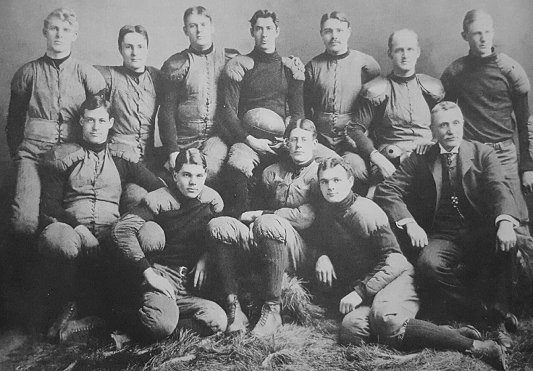

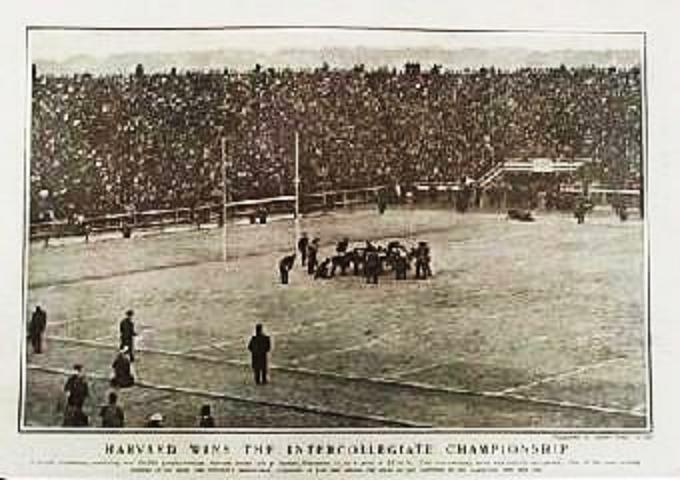

| Williams (6-4) | 16-0 | #16 |
| Bowdoin (2-7) | 12-0 | |
| Bates (3-3) | 16-6 | |
| Amherst (4-6-2) | 11-0 | |
| Columbia (8-5) | 18-0 | #12 |
| Wesleyan (3-6-1) | 16-0 | |
| at Army (5-1-2) | 6-0 | #5 |
| Carlisle (5-7-1) | 29-0 | |
| Brown (4-7-1) | 48-0 | |
| at Penn (10-5) | 33-6 | #13 |
| Dartmouth (10-1) | 27-12 | #9 |
| Yale (11-1-1) | 22-0 | #4 |
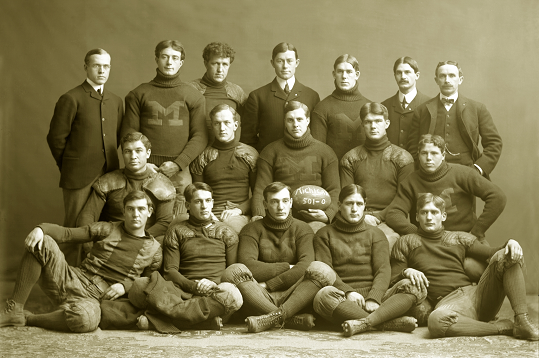
| Albion (7-4-1) | 50-0 | |
| Case (2-7) | 57-0 | |
| Indiana (6-3) | 33-0 | (#26-27) |
| Northwestern (8-2-1) | 29-0 | #14 |
| Buffalo (4-2) | 128-0 | |
| Carlisle (5-7-1) | 22-0 | |
| at Ohio State (5-3-1) | 21-0 | |
| Chicago (8-6-2) | 22-0 | |
| Beloit (5-3-3) | 89-0 | |
| (neutral site) Iowa (6-3) | 50-0 | #20 |
| Rose Bowl Stanford (3-2-2) | 49-0 |
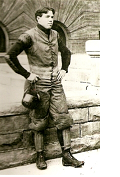 Although
Jim Thorpe and Red Grange are generally considered the best players of
college football before World War II, Willie Heston has some impressive
supporters. In 1925, when Grange was being proclaimed by nearly the
entire football world as the best ever, Fielding Yost begged to differ,
saying that Heston was the best player to that point. Yost being his
former coach, his testimonial may not mean much, but Pop Warner (who
coached Thorpe) and Knute Rockne reportedly agreed with him.
Although
Jim Thorpe and Red Grange are generally considered the best players of
college football before World War II, Willie Heston has some impressive
supporters. In 1925, when Grange was being proclaimed by nearly the
entire football world as the best ever, Fielding Yost begged to differ,
saying that Heston was the best player to that point. Yost being his
former coach, his testimonial may not mean much, but Pop Warner (who
coached Thorpe) and Knute Rockne reportedly agreed with him.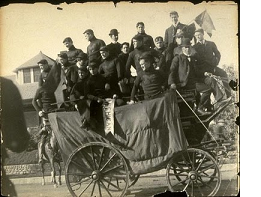 En
route to outscoring their opponents 550-0, Michigan scored a high of 128
on Buffalo, and in their significant wins they defeated 8-2-1
Northwestern (#14) 29-0, 6-3 Indiana (#26-27) 33-0, and 6-3 Iowa (#20) 50-0. The
closest anyone got to them was 5-3-1 Ohio State, who fell 21-0, but
8-6-2 Chicago and 5-7-1 Carlisle were close to that, each losing 22-0.
En
route to outscoring their opponents 550-0, Michigan scored a high of 128
on Buffalo, and in their significant wins they defeated 8-2-1
Northwestern (#14) 29-0, 6-3 Indiana (#26-27) 33-0, and 6-3 Iowa (#20) 50-0. The
closest anyone got to them was 5-3-1 Ohio State, who fell 21-0, but
8-6-2 Chicago and 5-7-1 Carlisle were close to that, each losing 22-0.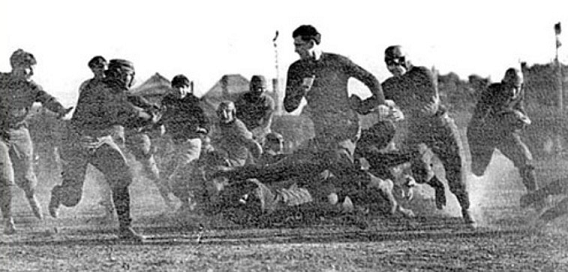
| Harvard 12-0 | Michigan 11-0 | |||||||||||||||||||||||||||||
|---|---|---|---|---|---|---|---|---|---|---|---|---|---|---|---|---|---|---|---|---|---|---|---|---|---|---|---|---|---|---|
|
| |||||||||||||||||||||||||||||
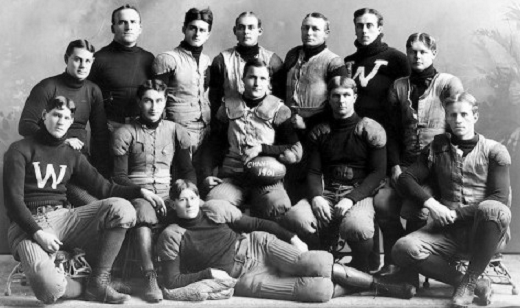
| Milwaukee Medical | 26-0 | |
| Hyde Park High School | 62-0 | |
| (neutral site) Beloit (5-3-3) | 40-0 | |
| Knox (8-3-1) | 23-5 | |
| Kansas (3-5-2) | 50-0 | |
| Nebraska (7-2) | 18-0 | #19 |
| Iowa State (2-6-2) | 45-0 | |
| at Minnesota (9-1-1) | 18-0 | #8 |
| at Chicago (8-6-2) | 35-0 |